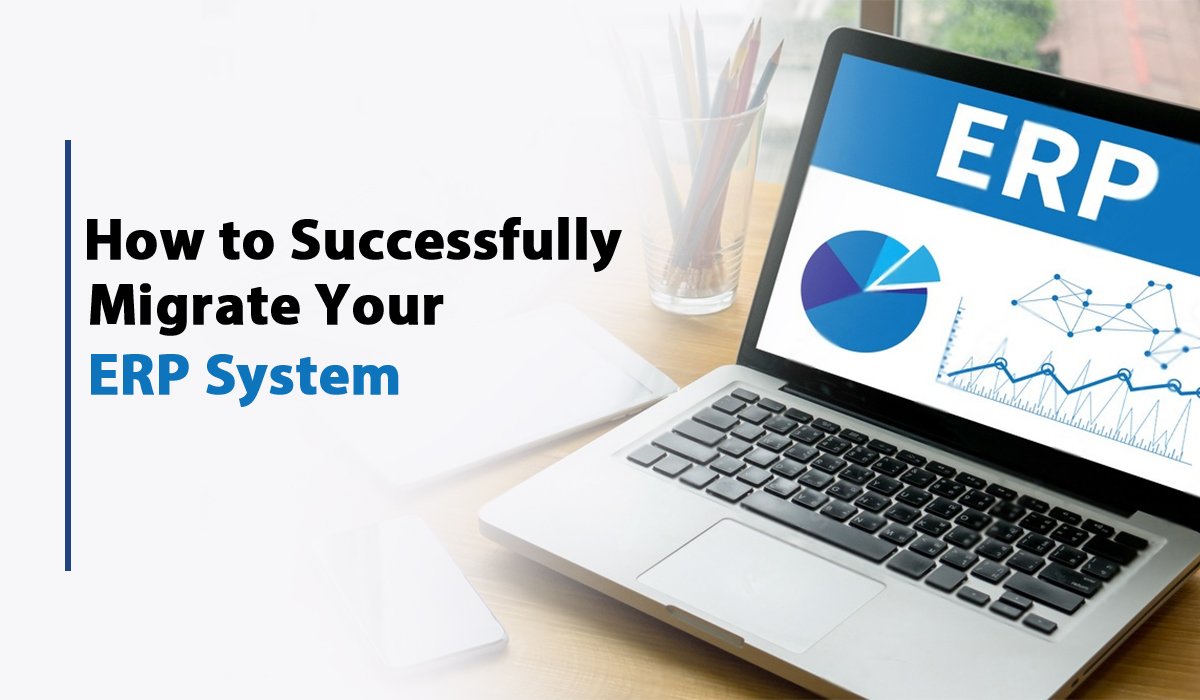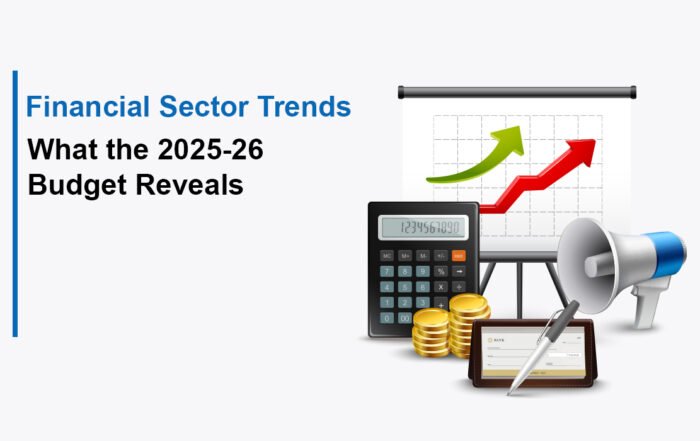Enterprise Resource Planning (ERP) systems are integral to the smooth operation of modern businesses, helping to streamline processes and improve overall efficiency. Nevertheless, due to the development of technology and changing requirements of the company’s business processes, it is required to switch to a new system of enterprise-wide ERP consulting services.
A migration from one ERP system to another is a major task that needs clear planning, implementation, and backing. In this blog, we’ll guide you through a pragmatic set of best practices to help you successfully migrate to a new ERP system, along with commentary from Lints Advisors, a premier outsource financial services firm
1. Understanding the need of ERP migration
To elaborate on the process of migration, it is critical to realize factors that make the migration of the ERP system necessary for your business. Some frequent motivations may be attributed to inadequate hardware, system inappropriateness for expansion, changes in business, or the desire for greater capabilities. This is the first perspective, where you have to compare your current system’s deficiencies, and how the new system can help you to overcome them is the initial stage in migration.
2. Selecting or implementing the Right ERP System
Choosing the proper ERP system is one of the most important decisions that will affect your organization even in the future. The type of system you decide to implement should be one that you are sure applies to your industry, is expandable, and nimble enough to change with the future environment and with changes in your business. To make the selection of the right of ERP services, you may turn to Lints Advisors which provides consulting services in this sphere. They can help in evaluating the ERP systems that will suit your business needs and strategic business goals in the future.
Considerations When Choosing an ERP System:
- Industry-Specific Features: Ensure the ERP system has features and functionalities that cater to your specific industry.
- Scalability: The system should be able to grow with your business, handling increased data and more complex processes.
- Integration: Choose an ERP that integrates seamlessly with your existing tools and platforms.
- Vendor Support: Evaluate the level of support and training the vendor offers, as this will be crucial during and after the migration.
3. Planning the Migration Process
Once you’ve chosen to outsource financial services, the next step is meticulous planning. This encompasses timing of the migration process, determining the areas to be migrated and putting into consideration the necessary resources.
Lints Advisors suggests breaking down the migration process into manageable phases:
- Pre-Migration Assessment: Assess the current system that requires migration for data to be moved, activities to be impacted, and possible risks.
- Data Cleaning and Preparation: This you need to do before engaging in any data migration since it will help in cleansing of data and hence increase the chances of accuracy during migration. This is very important so as to prevent mis happening at some later time.
- Develop a Migration Plan: Mention each of the steps in the migration process: data migration, system configuration, system testing, and human resource training.
Key Components of a Migration Plan:
- Timeline: Setting of goals and objectives including time frames and other features will ensure that progress is monitored.
- Resource Allocation: Clarifying roles and responsibilities of each member and they have to ensure that the other member of the team knows what he or she is supposed to do.
- Risk Management: Risk assessment involves defining the potential risk and aspirations to formulate the risk management plans.
4. Overlooking Depreciation and Amortization
One of the most vital aspects of an ERP system migration is the issue of data migration. It entails the migration of data from the old system to the new system and this may take a lot of time to happen.
Lints Advisors advises to engage your ERP consulting services provider and discuss how the migration of data will be done. This includes:
- Data Mapping: Matching the data fields you currently use to those that are to be implemented in the new system to propose.
- Testing: Carrying out the proper testing to be sure of any difficulty and then solve it before implementing the system.
- Configuration: Adapting a new ERP system in order to reflect chosen organizational structures, goals, and needs.
Common Data Migration Challenges:
- Data Quality Issues: Data is also very sensitive to issues like migration problems where improper accuracy or outdated information may lead to a major issue. For your data to be reliable make sure it is updated and requires least data cleaning.
- System Compatibility: There are also problems in data transfer arising from compatibility problems between the old and new systems.
- Downtime: Some of the practical advice include, avoiding peak hours in terms of data migration and ensuring there is a plan B for an unsuccessful migration.
5. Training and Change Management
To a large extent, the success of the ERP services is going to depend on how your team takes to the new system. Implementation is also important thus the need for training as well as change management. This includes:
- Role-Based Training: Training that has been developed in relation to the nature of their work assignments and each employee’s role.
- Ongoing Support: Continual follow-up support after the change in order to assist the workers in coping with the new change.
- Change Management: Applying change management techniques in order to win over the personnel, make them accept the new processes willingly.
6. Go-Live and Post-Migration Support
Go-live phase refers to that time when your newly implemented ERP system is up and running and being used by your team. But this is not the final process of migration. Maintenance is crucial to address any challenges that may occur and as a way of checking if the system is well running. Additionally, post-migration support should include:
- Monitoring: to check from time to time if there any kind of problem to solve without delay.
- User Feedback: Collecting feedback about the performance from users where they can pinpoint certain areas that need to be changed.
- System Optimization: Regular changes further depending on users’ responses and evolving requirements of a business.
7. Measuring the Outcome of ERP Migration
Once migration is over, there are few criteria that can be used to appraise the success of the project. Such criteria involve checking if the new system is relevant to your business, enhances operations, and gives an acceptable degree of reuse.
According to Lints Advisors, the best accounting consultant in India, it is possible to use KPIs for assessing the performance of ERP migration. These could include:
- System Performance: Supervising the availability, operational performance time and errors.
- User Satisfaction: Gathering the information of the users and their experiences with the new system in order.
- Business Outcomes: Evaluating the new system against performance benchmarks that are relevant to the business including; the increase in productivity levels, the amount of saving that is realized, and most importantly the ability of the system to enhance the perceived customer satisfaction level.
Conclusion
Migrating your ERP system is a complex but necessary step in keeping your business competitive and efficient. If you wish to perform an uneventful migration, make sure that you employ a systematic plan of undertaking and if you are not conversant with the technological aspect of it, seek help from organizations such as Lints Advisors that deals with ERP consulting services. The project itself is divided into such stages as planning, data migration, training of users, as well as post-migration support, which are all necessary for the successful completion of the project.
Perusing an ERP migration? Lints Advisors has the advice and assistance you demand to help embark on this demanding endeavor. Together with their vast team of consultants, they are able to provide end to end ERP service which helps in the selection process, to the go live process of converting the business from the current system to a new one.
Financial Sector Trends: What the 2025-26 Budget Reveals
The Union Budget 2025-26, unveiled by Finance Minister Nirmala Sitharaman, has set the stage for transformative changes in India's financial sector. The upcoming budget concentrates on developing economic expansion while making credit options more accessible [...]
Empowering Women: Financial Planning for 2025
In today's dynamic financial world, empowering women through tailored financial planning is more crucial than ever. Women often face unique financial challenges, including longer life expectancies, career breaks for caregiving, and persistent wage gaps. Addressing [...]
Why Is Form 1040 Important for Accounting Firms?
When it comes to the world of taxes, Form 1040 holds a central position. It is often referred to as the "U.S. Individual Income Tax Return" and serves as the primary document taxpayers use to [...]





